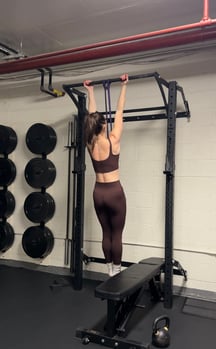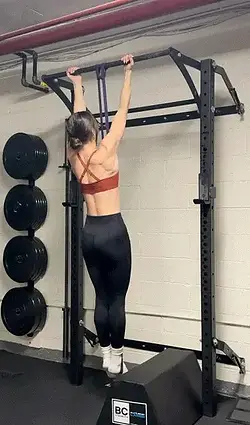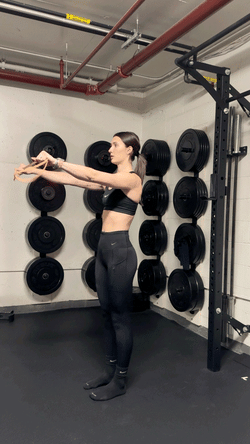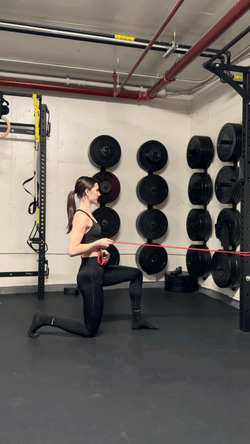Coach's Corner: 3 Ways to Use a Super Band
February 14, 2024

In the ever-changing world of fitness, resistance bands stand out as versatile tools with numerous benefits for fitness enthusiasts of all levels. These unassuming bands offer flexibility in movements, from targeting specific muscles to enabling full-body workouts. Their ability to travel makes them ideal for on-the-go or home workouts, ensuring a gym-like experience in any location. What makes resistance bands truly special is their ability to cater to users of different fitness levels, promoting muscle activation, endurance, and adaptability.
Using a band to make difficult exercises more accessible is one of my favorite ways to incorporate them into a program. The versatility of super-bands becomes evident as they add assistance where it's needed most—whether it's providing support during the most challenging part of a movement pattern or creating the heaviest resistance at the end range of motion. What dictates these specific differences are the adjustments to attachment point of the band and the exercise selection. This not only ensures a tailored approach to individual workouts but also gives space to create boundaries in a pattern or get creative with how it is used based on individual needs/ parameters. Listed below are 3 ways I love to incorporate them:
Assisted Chin Up
Need to Know: The Chin up or Pull Up are a bodyweight overhead pulling exercise. Doing this pattern requires shoulder mobility as well as core and upper body strength. Having the ability to use a band to assist in the movement makes the pattern accessible for any level based on the size/ strength of the band.
Key Tips:
- Arms overhead form a Y shape from your shoulders when holding on
- Squeeze you glutes and heels together to create full body tension
- Use your breath, inhale at the bottom, exhale on the way up
Modifications:
- Attach the band on the bar and step your foot into the loop
- Strap the band around the squat rack holsters at the bottom of your chin up depth and stand on the band for assistance only at the bottom
- To gain more thoracic mobility, you can take both legs straight and hips flat on the floor
Band pullaparts
Need to Know: I program this movement in sessions as a prep, isolation of muscles, or an accessory add on to the end. It works your upper back and rear deltoids, while the primary demand is on the movement of your scapula.
Key Tips:
- Think of your wrists as extensions of your arms (straight from shoulder to knuckles)
- Start arms reaching forward pull the band in opposite directions to make a T shape and end when you
- To increase difficulty walk your hands closer on the band, to make easier walk hands away from each other
- Changing pace at which you perform the movement will also change the intensity
- Flipping the hands to be palm up will work slightly different muscle groups
Single Arm Row
Need to Know: The single-arm row is a posterior chain exercise that requires trunk and shoulder stability to perform. In this set up (half kneeling) you are using the ground to create tension while the shoulder does the work.
Key Points :
- The band should be attached at belly button height
- Make sure to pull the band back and towards your hip while keeping a proud chest
- Regardless of your lower body set up, create tension into the floor
- Remember to focus on your breath/ bracing mechanics
Modifications:
- Above is pictured in a half kneeling set up, you can switch this to progress or regress the exercise
- Can add tempo changes to your movement increasing the demand of the movement and generating more time under tension




